Disaster Change

How does climate change affect disaster risk management strategies ?
The article discusses how climate change affects disaster risk management strategies. It explains that as the Earth's climate warms, extreme weather events such as hurricanes, floods, and wildfires are becoming more frequent and severe. This means that disaster risk management strategies must be adapted to address these new challenges. The article explores the increased frequency of extreme weather events, changes in agriculture and food security, and impacts on human health. It suggests that disaster risk management strategies should focus on improved forecasting, infrastructure improvements, evacuation planning, sustainable farming practices, crop diversification, food storage and distribution systems, healthcare infrastructure, public health education, and disease surveillance. By taking these steps, we can better prepare for and respond to natural disasters in a changing climate.

What is the relationship between climate finance and disaster risk reduction ?
Climate finance and disaster risk reduction are interconnected concepts that address the impacts of climate change. Climate finance provides funding for projects aimed at reducing greenhouse gas emissions and adapting to climate change, while disaster risk reduction involves strategies to minimize the potential impacts of natural disasters on communities and infrastructure. The relationship between the two lies in their shared goal of addressing climate change, with climate finance supporting disaster risk reduction through funding for adaptation measures, investments in vulnerable communities, promoting sustainable development, encouraging innovation, and strengthening institutional capacity.

How can climate services help in disaster risk reduction ?
Climate services play a crucial role in disaster risk reduction by providing essential information and tools that help communities, governments, and businesses to anticipate and respond to the impacts of climate change. These services encompass a range of activities, including weather forecasting, climate monitoring, and the development of early warning systems. Climate services contribute to disaster risk reduction through several strategies, including risk assessment, preparedness planning, early warning and response, and recovery and resilience building. By leveraging these services, societies can build resilience against the increasing challenges posed by a changing climate.

How can I prepare myself to give effective first aid in case of a natural disaster ?
To prepare for effective first aid in natural disasters, it's important to get educated and trained in basic life-saving techniques, assemble a well-stocked emergency kit, maintain personal health, engage in community preparedness efforts, and stay informed through reliable sources. This comprehensive approach ensures readiness to handle medical needs during disasters and enhances overall resilience.

What is disaster risk management ?
Disaster risk management (DRM) is a comprehensive approach aimed at reducing the impact of natural and human-made disasters on communities. It involves understanding, assessing, and reducing risks through prevention, preparedness, response, and recovery strategies. The goal is to ensure that people's lives and livelihoods are not compromised by disaster events. Key components include risk assessment, hazard mitigation, early warning systems, emergency planning, community education, immediate action, coordination, rehabilitation, reconstruction, and sustainable development. Best practices involve multi-stakeholder collaboration, gender sensitivity, use of technology, inclusive planning, and regular review and updating. Challenges include limited resources, political will, information gaps, and cultural differences. Effective DRM requires a multifaceted approach that considers social, economic, and environmental factors.
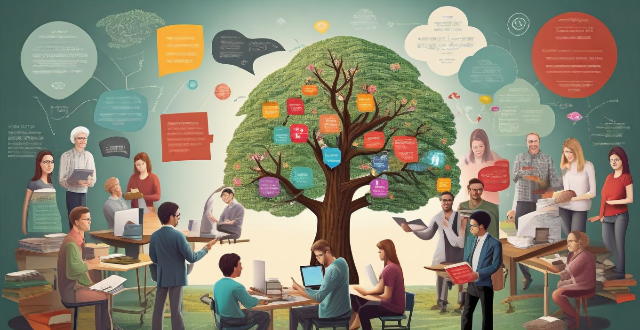
How important is public awareness and education in the context of disaster risk management ?
Public awareness and education are vital in disaster risk management, enhancing community preparedness, reducing vulnerabilities, promoting resilience, and encouraging community engagement. Examples like Hurricane Katrina and the Japan Earthquake and Tsunami highlight the importance of these initiatives in saving lives and minimizing damages during disasters.

What are the common challenges faced while implementing disaster risk management plans ?
Disaster risk management plans are essential for organizations and communities to prepare for, respond to, and recover from disasters. However, implementing these plans can be challenging due to various factors such as limited resources, lack of awareness and preparedness, coordination and communication issues, legal and regulatory constraints, unpredictable nature of disasters, inadequate technology and infrastructure, cultural differences and perceptions, and lack of trust in government institutions.
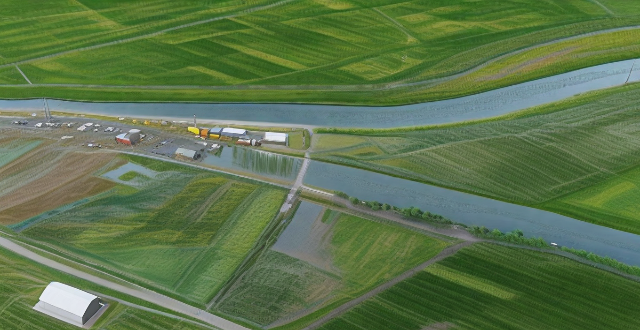
How can climate data analysis help in disaster risk reduction and management ?
Climate data analysis is crucial for disaster risk reduction and management. It helps identify high-risk areas, predict future weather patterns, develop mitigation strategies, and enhance disaster response and recovery efforts. By analyzing past and current climate data, we can better prepare for and respond to natural disasters such as floods, hurricanes, wildfires, and droughts.

What is the role of international organizations and cooperation in enhancing global disaster risk management ?
The text discusses the importance of international organizations in disaster risk management. It mentions their role in promoting cooperation, developing policies, coordinating resources, building capacity, advocating for risk reduction, and facilitating research. The text concludes that these efforts are crucial for creating a resilient world capable of withstanding natural disasters while minimizing loss of life and property damage.
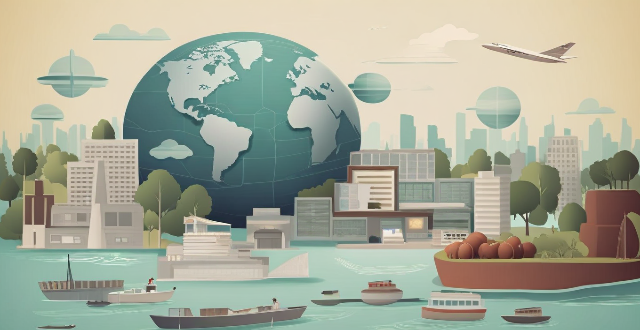
How can satellite communication be used for emergency response and disaster relief ?
Satellite communication is critical in emergency response and disaster relief, offering global coverage, high availability, scalability, and multipurpose use. It enables immediate alerts, coordination, resource deployment, and medical assistance during emergencies. In disaster relief, it aids damage assessment, information dissemination, infrastructure recovery, and aid distribution. Key technical aspects include satellite phones, VSAT terminals, and data collection through sensors. Proper logistics such as training, maintenance, and partnerships with service providers are crucial for effective utilization. Satellite communication significantly enhances the capability to respond to natural disasters and emergencies, reducing their impact on lives and properties.

How do insurance mechanisms support disaster risk management and recovery processes ?
Insurance mechanisms play a vital role in supporting disaster risk management and recovery processes, providing financial protection to individuals, businesses, and governments against the economic impacts of natural disasters. They encourage risk mitigation measures, offer financial protection through various policies, facilitate recovery and reconstruction, invest in catastrophe modeling and research, and create public-private partnerships to improve disaster preparedness and response.

What kind of insurance coverage should I have for disaster preparedness ?
When it comes to disaster preparedness, having the right insurance coverage is crucial. Here are some types of insurance that you should consider: - Homeowners Insurance: Covers the structure of your home, personal belongings, and provides temporary housing expenses if you cannot live in your home due to a covered loss. - Flood Insurance: Covers damage to your home and its contents caused by flooding and requires an Elevation Certificate. - Earthquake Insurance: Covers damage to your home's structure and personal belongings caused by an earthquake. - Windstorm/Hurricane Insurance: Covers windstorm or hurricane damage with a specific deductible and exclusion clauses. - Liability Insurance: Covers bodily injury or property damage that you cause to others and provides additional liability coverage beyond standard policies. - Business Insurance: Covers lost income and extra expenses if your business is interrupted by a disaster and damage to your business property. - Life Insurance: Provides coverage for a specific period of time or lifetime coverage and builds cash value over time. - Health Insurance: Ensures coverage for medical expenses related to disasters and ER visits during emergencies.

What policies are being implemented to mitigate the effects of climate change on national security ?
Climate change poses a significant threat to national security, affecting areas such as food and water scarcity, natural disasters, and displacement of people. Governments around the world are implementing various policies to mitigate these effects and ensure the safety and stability of their nations. Key policies include transitioning to clean energy sources, promoting sustainable agriculture practices, protecting coastal communities and infrastructure, collaborating globally to address climate change, and building resilience to natural disasters through disaster risk reduction and preparedness. By implementing these policies, governments aim to not only reduce the direct effects of climate change but also strengthen their overall capacity to handle related challenges, ensuring the continued security and stability of their nations.

How does disaster risk management help in reducing the impact of natural calamities ?
Disaster risk management is crucial for reducing the impact of natural calamities. It involves risk assessment, reduction, emergency preparedness, and response and recovery efforts. Effective disaster risk management can save lives, protect property, maintain economic stability, and enhance community resilience. It reduces the impact of natural calamities through early warning systems, structural improvements, education and awareness programs, emergency response plans, and recovery efforts. By implementing these components, we can build more resilient societies capable of withstanding natural disasters.

How can insurers manage the increased frequency and severity of natural disasters due to climate change ?
Insurers must adapt to the challenges of increased natural disasters by improving risk assessment, innovating products, managing underwriting and claims, ensuring capital reserves, and enhancing customer education.

Can you give examples of best practices in disaster risk management from different countries ?
Disaster risk management is a crucial aspect of ensuring the safety and well-being of communities worldwide. Here are some examples of best practices in disaster risk management from different countries: Japan is known for its advanced earthquake preparedness and response systems, including an early warning system, regular drills and training, and strong building codes. The United States has a well-established emergency management system that includes community preparedness programs, an integrated emergency management system, and public awareness campaigns. Norway has developed an early warning system for landslides, flood forecasting models, and avalanche mitigation strategies to protect against natural disasters. India has implemented a cyclone preparedness program, flood forecasting and early warning systems, and earthquake-resistant construction techniques in high-risk areas.

What steps should I take to prepare my home for a natural disaster ?
Preparing your home for natural disasters is crucial to ensure the safety of your family and property. Here's a summary of key steps: 1. **Assess Your Risk**: Identify potential disasters and determine your vulnerability based on location. 2. **Develop an Emergency Plan**: Create and practice a plan outlining evacuation routes and meeting places. 3. **Secure Your Home**: Take measures like securing loose objects, reinforcing windows/doors, installing shutters, anchoring furniture, trimming trees, clearing gutters, inspecting the roof, and considering a sump pump. 4. **Maintain Essential Supplies**: Stock up on food, water, medication, first aid kits, backup power sources, important documents in waterproof containers, and prepare an emergency kit. 5. **Stay Informed**: Keep updated on weather conditions and sign up for emergency alerts. By following these steps, you can significantly reduce the risks associated with natural disasters and ensure better preparedness and recovery.

What is the role of climate model predictions in disaster preparedness ?
Climate model predictions are crucial for disaster preparedness, helping to understand climate change impacts, improve response planning, enhance community resilience, and promote sustainable development.

How does climate change influence the operational environments for defense forces ?
Climate change is significantly impacting the operational environments for defense forces, affecting military planning, strategy, and tactics. Extreme weather events are becoming more frequent, requiring defense forces to manage or support disaster response operations. Changes in terrain and landscape due to melting ice caps and rising sea levels can affect military operations. Climate change can exacerbate social tensions and conflicts over resources, leading to internal displacement and potential security threats. Health risks and disease spread can expand due to changes in temperature and rainfall patterns. Energy requirements and logistics may need adjustments in operational environments affected by climate change.

How can countries prepare for and respond to climate disasters ?
Climate disasters are becoming more frequent and severe due to climate change. Countries need to prepare for and respond to these disasters effectively to minimize the damage caused. In this article, we will discuss some strategies that countries can adopt to prepare for and respond to climate disasters.
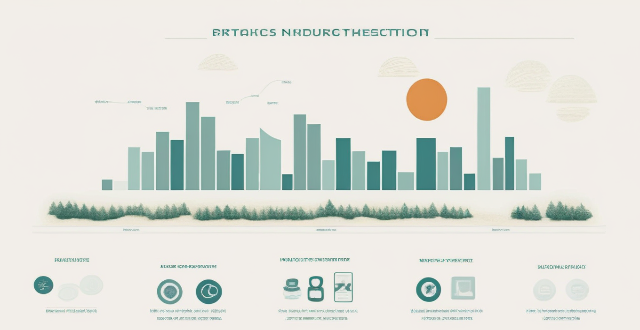
What role does climate change play in the increased frequency of natural disasters and their impact on health ?
The article discusses the role of climate change in increasing natural disasters and their impact on health. It explains how extreme weather events, air quality issues, disruption of infrastructure and services, and mental health impacts are all consequences of these disasters. The article emphasizes the importance of preparation and mitigation strategies to minimize the negative effects on public health.

What role do women play in climate change adaptation and mitigation efforts ?
Women play a crucial role in climate change adaptation and mitigation efforts. They are involved in sustainable agriculture, conserving natural resources, enhancing energy efficiency, advocating for climate action, and building resilience. By recognizing and supporting their contributions, we can enhance our collective efforts to address climate change.

How does climate change affect human health ?
Climate change affects human health in numerous ways, including increased risk of extreme weather events like heatwaves, floods, and hurricanes that can lead to dehydration, injuries, and displacement. Changes in disease vectors due to warmer temperatures allow the spread of mosquito-borne and tick-borne diseases. Longer growing seasons result in higher pollen counts, worsening allergies, while wildfires and dust storms reduce air quality causing respiratory issues. Food security is also affected as droughts and extreme temperatures can lead to crop failures and malnutrition. Mental health impacts include stress and anxiety from disaster-related trauma and economic stress. Addressing this challenge requires adaptation strategies, mitigation efforts, and public health preparedness.
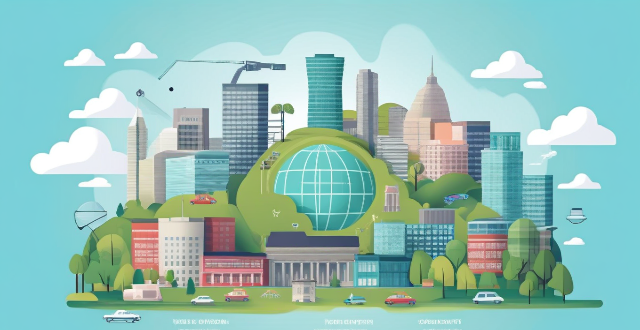
How is the tourism industry adapting to climate change-related risks and opportunities ?
The tourism industry, a significant contributor to the global economy, has been profoundly affected by climate change. The sector is now compelled to adapt to the associated risks and opportunities in various ways, including developing disaster management plans, building more resilient infrastructure, promoting sustainable tourism practices, diversifying offerings to attract tourists throughout the year, adopting green initiatives, developing nature-based tourism activities, creating wellness retreats, and providing educational programs about the connection between climate change and health. By implementing innovative solutions and embracing sustainability, the sector aims to mitigate the negative impacts of climate change and ensure its long-term viability.

How can countries prepare for the security challenges brought about by climate change ?
Climate change poses security challenges such as natural disasters and conflicts over resources. Countries can prepare by strengthening infrastructure, adapting agriculture, managing water, enhancing energy security, mitigating climate change impacts, and strengthening governance and cooperation.

How do low-income countries deal with issues related to climate change and environmental degradation ?
Low-income countries face challenges in addressing climate change and environmental degradation. They focus on building resilience through early warning systems, disaster risk reduction, infrastructure development, and resilient agricultural practices. Community-based approaches involve local communities in decision-making, capacity building, participatory planning, and integrating traditional knowledge. Mitigation efforts include investing in renewable energy, promoting energy efficiency, and implementing sustainable forestry practices. International cooperation involves financial assistance, technology transfer, and capacity building support. Policy frameworks guide actions on climate change and environmental protection through national policies, legislative measures, and public awareness campaigns.

How does climate change influence resource competition and its impact on international relations ?
Climate change is significantly impacting resource competition and international relations by altering the availability and distribution of natural resources like water, food, and energy. This results in increased competition among nations for these resources, affecting economic systems, political structures, and global stability. Water scarcity due to changing precipitation patterns is causing conflicts, especially in regions sharing rivers or aquifers. Changes in temperature and rainfall patterns are affecting food production, leading to increased import dependency and potential conflicts over limited resources. Energy resource competition is shifting towards renewables due to climate change impacts on fossil fuels. Countries are engaging in mitigation and adaptation efforts through international agreements, technology transfer, and disaster risk reduction. While climate change presents challenges, it also offers opportunities for global cooperation in addressing this common threat.

How does climate change impact job creation in developing countries ?
Climate change has a profound effect on job creation in developing countries, where agriculture and natural resources are key to livelihoods. Impacts include decreased agricultural productivity due to loss of arable land, crop failures, and pest outbreaks. Natural resource-based industries like forestry, fishing, and tourism also suffer from climate-related disruptions. However, there's increased demand for jobs in renewable energy and energy efficiency as part of efforts to combat climate change. Health and safety risks rise in traditional jobs due to extreme temperatures and weather patterns. Infrastructure development for adaptation and disaster response creates construction and engineering jobs. Migration, both internal and international, is another consequence of climate change, leading to shifts in urbanization and economic structures. Addressing these challenges requires innovative solutions and international cooperation to ensure sustainable and resilient economic development.

How can climate and environmental policies be adapted to address the challenges posed by climate change ?
To address the challenges posed by climate change, climate and environmental policies must be adapted to ensure they are robust, flexible, and capable of meeting the evolving needs of our planet. This can be done by setting clear and ambitious targets for reducing greenhouse gas emissions and developing strategies for adapting to the impacts of climate change that cannot be avoided. Promoting renewable energy sources, improving energy efficiency, investing in research and development, encouraging sustainable land use, strengthening international cooperation, educating the public and raising awareness, establishing carbon pricing mechanisms, and preparing for climate-related risks are also key steps. By adopting these measures, we can work together towards a sustainable future.